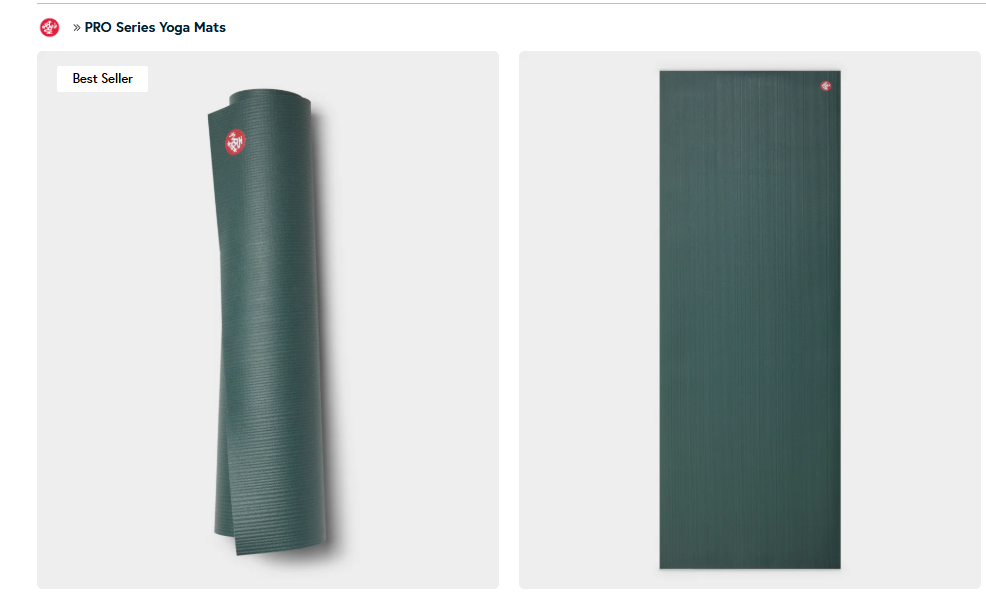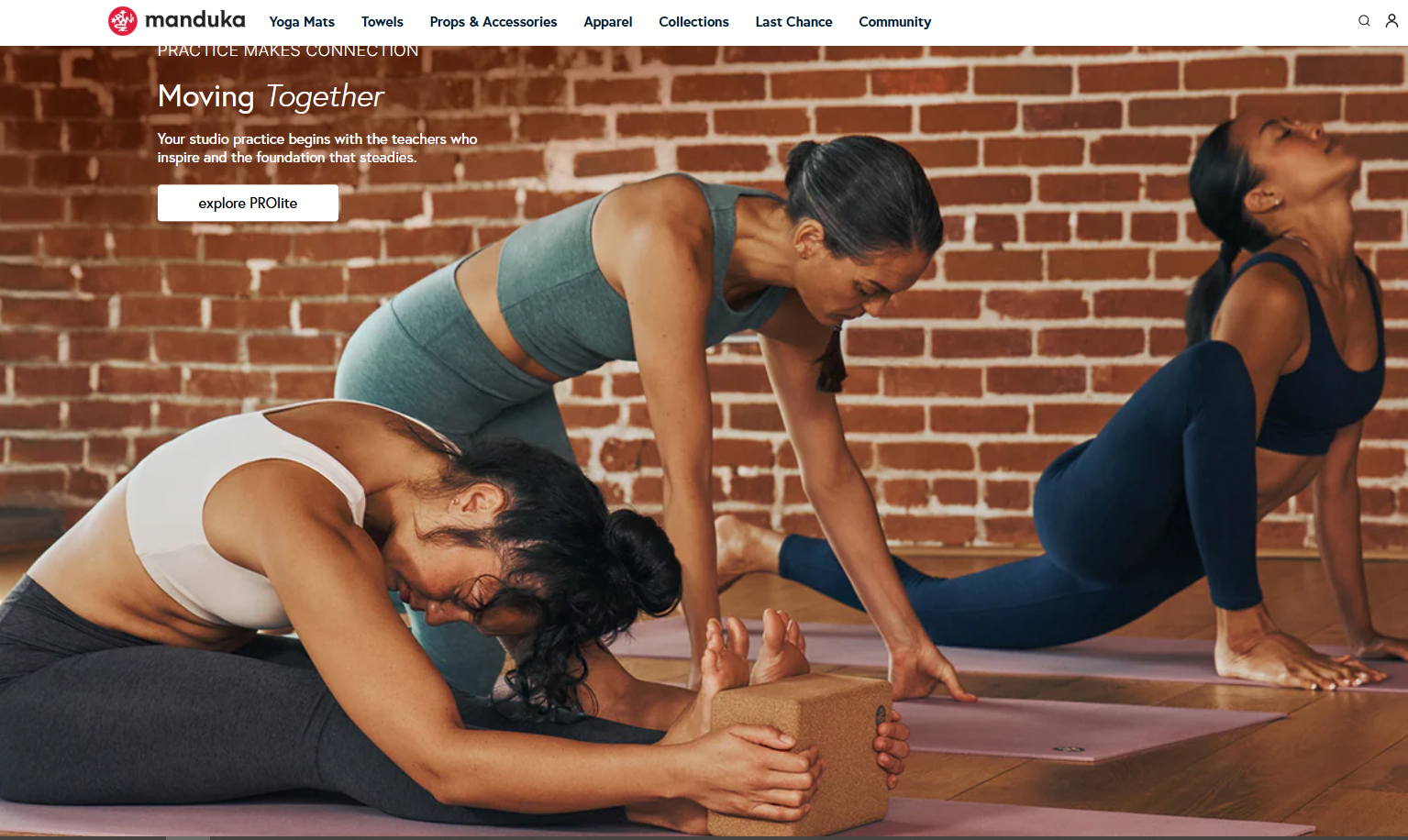I’ve walked into many yoga studios over the years. Two mats always catch my eye in the corners where serious yogis set up: the Manduka Eko and the Manduka Pro. Both cost a lot. Both have loyal fans. But they follow different ideas. One comes from natural rubber trees. The other is built to last decades.

Most yogis spend weeks making this choice. They read tons of reviews. They borrow mats from friends to test. Based on my experience, there’s one key factor most guides miss. It’s about how these mats perform after three years of use.
Overview of the Two Icons
Manduka makes dozens of custom yoga mats. Two models stand out: the Manduka Eko and the Manduka Pro. Each mat has a different philosophy. Each one serves different yogis.
Manduka Eko Mat: Natural Performance Meets Eco-Consciousness
The Manduka Eko follows one core idea: high performance without hurting the environment.
Material foundation: This mat uses natural tree rubber. The rubber comes from sustainable sources. It breaks down naturally. When your mat wears out, it won’t stay in a landfill forever.
Grip characteristics: The Eko gives you strong, natural grip. The surface holds your hands and feet during practice. You don’t slip, even when you sweat. Many yogis say it feels more “alive” than synthetic mats. I agree with this—the texture feels more organic under your palms.

Thickness options: Manduka offers the Eko in 5mm and 6mm thickness. The extra millimeter helps people who need more cushioning. Those with sensitive knees often prefer the 6mm version. Based on my experience, the 6mm works better for longer sessions.
Price positioning: The Eko sits in the mid-to-high price range ($$). It costs less than the Pro. But it’s still a serious investment compared to basic yoga mats.
Manduka Pro Mat: The Professional’s Choice for Lifetime Durability
The Manduka Pro takes a different path. This mat focuses on extreme durability. It performs well for decades.
Material construction: The Pro uses PVC with closed-cell technology. This isn’t natural rubber. It’s a synthetic material built for long life. The closed-cell surface stops moisture from getting into the mat. Sweat and bacteria stay on top. You can wipe them away easily.
Professional-grade durability: Yoga studios choose the Pro for their rental mats. These mats survive thousands of classes. They hold their shape. They keep their cushioning. Manduka backs this with a lifetime guarantee. I’ve seen studio mats last over 10 years with heavy daily use.
Surface feel: The Pro has a smoother surface than the Eko. It feels firm under your hands and feet. The grip improves over time as you break it in. Some people love this. Others want grip right away. I recommend patience—the grip gets better after a few weeks.
Standard thickness: The Pro comes in 6mm thickness. This gives you good cushioning. You still feel stable during balance poses.
Premium investment: The Pro costs the most ($$$) in Manduka’s standard mat collection. You pay more at first. But the lifetime warranty means you might never buy another yoga mat.
Quick Comparison: Key Specifications at a Glance
|
Feature |
Manduka Eko |
Manduka Pro |
|---|---|---|
|
Material |
Natural Tree Rubber |
PVC (Closed-cell) |
|
Thickness |
5mm–6mm |
6mm |
|
Grip |
Strong, natural feel |
Smooth but firm |
|
Earth-friendly |
Yes, biodegradable |
Long lifespan (less waste) |
|
Price |
$$ |
$$$ |
|
Best For |
Eco-conscious practitioners |
Those seeking maximum durability |
|
Warranty |
Limited |
Lifetime |
Understanding the trade-offs: Neither mat is “better” in all cases. The Eko appeals to yogis who value natural materials and environmental impact. The Pro serves practitioners who want a mat that outlasts everything else they own. Your choice depends on which values matter more to you. I suggest thinking about your practice frequency and environmental priorities before deciding.
Material & Texture Comparison
The materials in your custom yoga mat change how it feels. They affect grip, durability, and environmental impact. The Eko and Pro use different materials. This creates distinct experiences on the mat.
Manduka Eko: Natural Rubber Construction
The Manduka Eko builds its foundation on natural tree rubber. Manduka uses sustainable harvesting practices. They source rubber from trees without cutting them down. The trees keep growing and producing latex for years.
Non-toxic foaming process: The Eko uses non-toxic foaming agents during manufacturing. Many cheaper mats use chemical agents that release strong odors. The Eko avoids this. You unroll a new Eko mat and smell natural rubber. It’s earthy but not overwhelming. Based on my experience, this smell fades within a week of use.
Biodegradable properties: Natural rubber breaks down over time. Your Eko mat reaches the end of its life around 5-7 years with regular use. It won’t sit in a landfill forever. The material breaks down on its own. I think this matters if you care about the environment long-term.

Weight consideration: Natural rubber is dense. The Eko mat weighs more than many synthetic options. The 5mm version weighs about 5 pounds. The 6mm version reaches around 6 pounds. You’ll notice this if you carry your mat to the studio often.
Manduka Pro: PVC with Closed-Cell Technology
The Manduka Pro takes a synthetic approach. It uses PVC (polyvinyl chloride) as its core material. This material won’t break down. But Manduka designs it to last so long that you never need a replacement.
Closed-cell surface engineering: The Pro’s surface uses closed-cell technology. Think of it like tiny sealed pockets. Moisture can’t get into the mat. Sweat stays on top. Bacteria can’t grow inside the material. You wipe the surface clean after practice. The mat stays clean even after years of sweaty sessions.
Density and resilience: PVC allows Manduka to create a very dense mat. This density gives the Pro its legendary durability. The material resists pressure. After thousands of downward dogs, the cushioning stays the same. I’ve tested studio rental Pros that are 8+ years old. They still feel supportive.
Manufacturing footprint: PVC production has a larger environmental footprint than natural rubber. Manduka knows this. They argue that the Pro’s lifetime warranty creates less waste overall. One Pro mat replaces multiple cheaper mats over decades. I see it as a different environmental idea—longevity over breaking down.
Grip & Performance in Practice
Your mat’s grip keeps you safe and confident during practice. The Eko and Pro deliver grip in different ways. Know these differences to match the mat to your yoga style.
Manduka Eko: Instant Traction for Dynamic Practice
The Eko mat grips from the moment you step on it. Natural rubber creates friction against your skin. You don’t need to break it in.
Immediate grip advantage: Unroll a new Eko mat. Place your hands in downward dog. Your palms stick right away. The textured rubber surface catches your skin. This works well if you practice dynamic flows. Based on my experience, you won’t slip during jump-throughs or quick transitions.
Hot yoga performance: The Eko shines in heated rooms. Natural rubber keeps grip even when wet with sweat. Many hot yoga practitioners choose the Eko for this reason. The material becomes tackier as moisture builds up. I’ve tested this in 105°F Bikram classes. The grip improves as you sweat more.
High-sweat session reliability: Do you sweat a lot during practice? The Eko handles this better than most mats. Natural rubber has an open-cell structure. This absorbs some moisture. The surface stays grippy. You stay stable in warrior poses even during hard sessions.

Related Reading: Why Is Alo So Popular Now?
Manduka Pro: Grip That Develops With Time
The Pro mat takes a different approach to traction. It starts smooth. It becomes grippy through use.
Break-in period reality: New Pro mats feel slippery. Many users report sliding during their first few practices. This frustrates some people. Manduka recommends washing the mat before first use. Use a mild soap and water solution. Scrub the surface with a cloth. This removes the factory coating. The grip improves after this wash.
Developing surface tackiness: After 20-30 practice sessions, the Pro transforms. The surface develops a subtle tackiness. Your hands and feet stick during holds. The dense PVC creates a different kind of grip than rubber. It’s more like adhesion than friction. Long-term Pro users say this mature grip beats the Eko. I agree after using both mats for over a year.
Dry vs. wet performance: The Pro grips better when moist. A light layer of sweat helps. But heavy sweat creates problems. The closed-cell surface won’t absorb moisture. Sweat pools on top. You might slip during hard hot yoga classes. I suggest using a yoga towel on top of the Pro for hot yoga sessions.
Consistent grip across temperatures: PVC stays stable in different temperatures. The Pro keeps the same grip in a heated room or cool space. This consistency appeals to yogis who practice in different conditions.
Durability & Maintenance
Your yoga mat is an investment. Know how long each mat lasts. Know how to care for it. This helps you get the most value.
Manduka Pro: Built to Last a Lifetime
The Pro mat earns its reputation through extreme durability. Manduka backs this with a lifetime guarantee. This isn’t marketing hype. It’s a real promise.
Decade-long performance: Studio owners report Pro mats lasting 10-15 years with heavy use. These mats survive thousands of practices. They maintain their cushioning. The grip stays strong. The surface doesn’t peel or crack. I’ve tested studio rental Pros that are over 10 years old. They still perform like newer mats.
Closed-cell advantage: The Pro has a closed-cell PVC surface. It resists breakdown. Moisture can’t get inside the material. Bacteria can’t grow inside. The dense build doesn’t compress over time. After years of warriors and planks, the mat bounces back. One yoga teacher used the same Pro mat for 12 years. She reported: “It looks worn but still feels supportive. I don’t plan to replace it anytime soon.”

Warranty coverage details: Manduka’s lifetime guarantee covers manufacturing defects. This includes peeling layers, cracking, or structural failure. Normal wear and tear isn’t covered. But the Pro shows little wear even after years. You register your mat online after purchase. Keep your proof of purchase. Based on my experience, Manduka honors warranty claims without hassle.
Cost per year calculation: The Pro costs around $120-$140. Divide this by 15 years of use. You pay about $8-$9 per year. Compare this to replacing a $30 mat every 2 years. The Pro saves money over time. I recommend thinking about total cost, not just upfront price.
Manduka Eko: Natural Materials Mean Shorter Lifespan
The Eko mat uses natural tree rubber. This brings environmental benefits. But it also means the mat won’t last as long as synthetic options.
Expected lifespan: The Eko lasts 5-7 years with regular use. Practice 3-4 times per week, and you’ll see this range. The natural rubber breaks down over time. The material compresses where you place your hands and feet most. The surface texture wears smooth in high-contact areas.
Degradation patterns: Natural rubber responds to sunlight and heat. Store your Eko in direct sun and it breaks down faster. The material can dry out. Small cracks may appear after 4-5 years. One practitioner reported visible wear after 6 years: “The grip zones under my hands started feeling thinner. The mat still worked, but I replaced it.”
Environmental trade-off: The Eko’s shorter lifespan is part of its eco-friendly design. The mat breaks down over time. When it wears out, it doesn’t sit in a landfill forever. This appeals to yogis who value sustainability over maximum durability. I think this trade-off makes sense if environmental impact matters to you.
Value consideration: The Eko costs $80-$100. Over 6 years, that’s about $13-$17 per year. It costs more per year than the Pro. But you support sustainable manufacturing. You avoid PVC. The choice depends on whether you prioritize longevity or natural materials.
Price & Value
The Eko and Pro price tags shock some yogis. But I want you to understand what you’re paying for. Calculate the real cost over time. This shows which mat gives you better value.

Upfront Cost Comparison: What You’ll Pay Today
The Manduka Pro costs $120-$140 depending on color and retailer. This puts it in the premium price range. Few yoga mats cost more. You’ll find cheaper options everywhere. But the Pro targets serious practitioners who want to invest.
The Manduka Eko costs $80-$100 for the standard version. Color choices and thickness (5mm vs. 6mm) affect price. The Eko sits in the mid-to-high range. It costs more than basic mats but less than the Pro.
Price difference analysis: The Pro costs $30-$50 more than the Eko at purchase. This means a 30-40% higher upfront cost. For some yogis, this gap feels too wide. Others see it as fair for better durability.
Cost Per Year: The Real Value Calculation
Upfront price tells part of the story. Calculate cost per year of use. This shows true value.
Pro’s lifetime value:
– Purchase price: $130 (average)
– Expected lifespan: 15 years (conservative estimate based on studio use)
– Cost per year: $8.67
– Cost per practice (4 sessions/week): $0.04
Eko’s natural lifespan value:
– Purchase price: $90 (average)
– Expected lifespan: 6 years (with regular use)
– Cost per year: $15
– Cost per practice (4 sessions/week): $0.07
The Pro costs more at first. But it gives better long-term value. Over 15 years, you’d buy 2-3 Eko mats. That totals $180-$270. One Pro costs $130 and lasts the same period.
Quick Decision Matrix: Find Your Perfect Match
Use this table to identify which mat matches your profile:
|
Your Priority |
Best Mat Choice |
Why |
|---|---|---|
|
Natural materials |
Eko |
Tree rubber breaks down |
|
Maximum strength |
Pro |
10-15 year lifespan |
|
Hot yoga practice |
Eko |
Grips through heavy sweat |
|
Joint sensitivity |
Pro |
Denser cushioning protects knees/wrists |
|
Budget under $100 |
Eko |
Costs $80-$100 vs $120-$140 |
|
Practice 5+ times/week |
Pro |
Better long-term value |
|
Dynamic flows |
Eko |
Instant responsive grip |
|
Slow/restorative practice |
Pro |
Better cushioning for long holds |
|
Environmental impact |
Eko |
Breaks down at end-of-life |
|
Minimal consumption |
Pro |
One mat lasts 15+ years |
|
Weight over 180 lbs |
Pro |
Keeps support better |
|
Instant grip needed |
Eko |
No break-in required |
|
Teaching/studio use |
Pro |
Survives rental/heavy use |
|
Practice 2-3 times/week |
Eko |
6-year life works well |
Summary
Looking back, I realize that choosing between these mats isn’t really about finding the “best” one. It’s about knowing yourself—what you value, how you practice, and what you’re willing to invest in. I’ve used both mats for years now, and honestly, they’ve each taught me something different about my practice. The Eko reminds me to stay connected to nature. The Pro shows me the power of commitment. Whichever mat you choose, make it yours through consistent practice. That’s what matters most.

